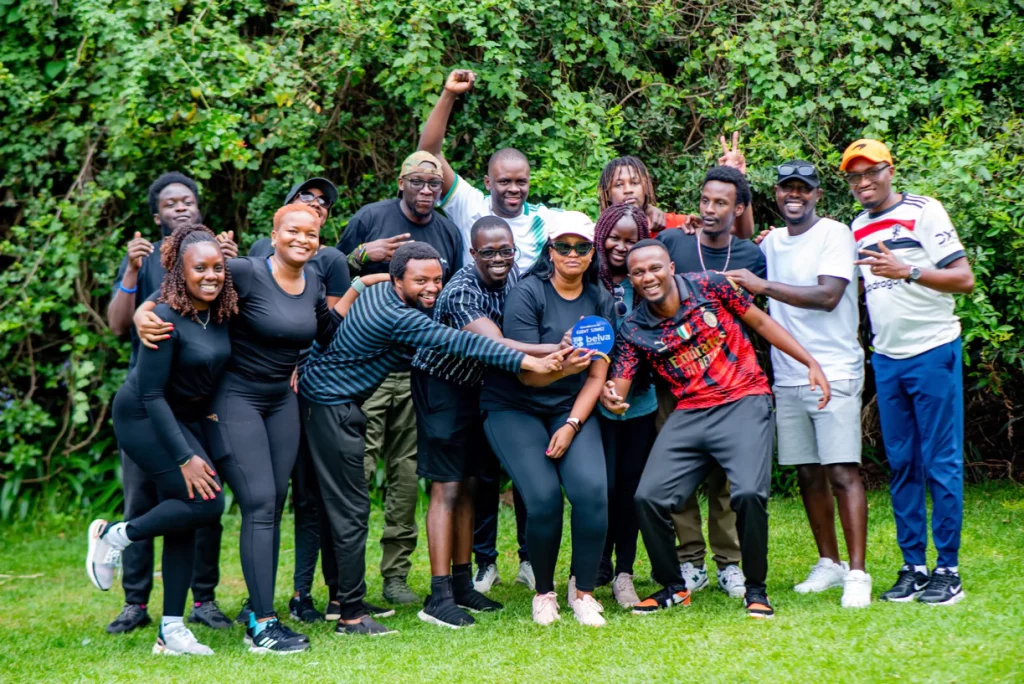I remember back in campus when we were pursuing Statistics, we had this cool quote that we loved making at every opportunity we got: numbers never lie.
And true, numbers will never lie.
We have collated insights across different sources to give you a sneak peek into digital trends in Africa and the rest of the world.
Numbers never lie
Here, we will compare the digital trends in Nigeria and South Africa, which are undoubtedly sub-Sahara’s two largest economies, against Kenya, Uganda and Tanzania.
Internet use
One promising aspect you will note is that internet use continues to grow year in year out in developing countries. Its penetration continues to make the world one big global village.
Bill Gates was right in his 1995 prophecy book ‘The Road Ahead ’ where he called the internet the information highway that would interconnect the world.
Nigeria (obviously) leads with 109.2 million internet users, an increase of 4.8 million people from 2021.
South Africa has 41.19 million internet users, an increase of 494 thousand people compared to 2021.
Today, Kenya has 23.35 million internet users, a growth of 1.6 million compared to the year 2021.
Tanzania: 15.6 million, a growth of 446 thousand people compared to 2021.
Uganda has 13.92 million internet users, a growth of 1.8 million users from 2021.
As internet use continues growing, it is fascinating to find out that people are moving away from the traditional mainstream media platforms such as TV, newspapers and radios.
In an article penned in 2017 on ThinkwithGoogle, Harvard Business Professor Thales Teixeria explored interesting TV advertising data in the US pitting the 1990s against the recent years.
Whereas 97% of TV ads got full viewership in the 1990s, that percentage has dwindled to a measly 20% in recent years.
The African story cannot be further from this.
As a C-suite leader, you, therefore, need to be well advised.
Internet Connection speeds
The average internet user is demanding faster internet speeds.
It could be that they are working from home, viewing more videos, e-learning or engaged in e-meetings that require faster internet speeds.
South Africa leads with a median cellular network demand of 30.54Mbps. Nigeria comes a distant second with an internet connection demand of 17.38Mbps. Kenya is third with a 13.19Mbps median cellular network, Uganda (11.85Mbps) and the Tanzanian user demands 10.89Mbps.
As the internet continues making inroads in Africa, it is interesting to note that social commerce as opposed to full-blown e-commerce has won the day. A 2019 Geopoll found out that social media sites ranked way higher than most e-commerce sites in Africa.
Facebook users
Facebook continues to be the behemoth of social media platforms. However, according to TechCrunch, Facebook’s growth might not be as rapid as it was some years ago, and perhaps the reason why Mark Zuckerberg is leading a rebrand to Metaverse.
In a 2019 article, Techcrunch reported that Facebook might as well be dying for the Generation Z who are attracted to its more visually appealing cousins; Instagram and Snapchat.
However, according to Datareportal, about 59% of young people under the age of 35, especially from developing economies, are still using Facebook. It remains a most relevant platform across Africa.
Nigeria has 26.1 million people active on Facebook, South Africa has 24.2 million people, Kenya (9.95 million), Tanzania (4.35 million) and Uganda (2.5 million).
Youtube Users
As we had indicated in our predictions for 2022 digital marketing trends, video marketing is the way to go. The Youtube numbers show this: Nigeria has 32.9 million, South Africa 25.3 million and Kenya 9.29 million.
It is interesting to note that the growth of Youtube globally grew bigger, especially with the onset of the pandemic and national lockdowns being implemented. NBCNews says that viewership of online video content grew by over 500% on March 15, 2020, when most countries went on lockdown.
Clearly, the video became the ‘IT’ thing. No wonder, Facebook was quick to introduce live videos on its platform. Tiktok is also stealing the show from all the other social media platforms.
Looking at the Youtube charts, you will note that the videos getting the highest traction are music videos. As a marketer, therefore, you could leverage this popularity by engaging in influencer marketing or bidding for these trending Youtube videos.
Instagram Users
Nigeria has 9.05 million Instagram users with 70% of these being mostly below the age of 35 years according to Statista, South Africa 8.2 million (63% being below 35 years), Tanzania interestingly has (3.15 million) ahead of Kenya (2.5 million) and Uganda (581.1K) users.
Tanzania’s Instagram growth can be attributed to celebrities such as Diamond Platnumz and Harmonize who are active on the platform. Research also shows that Tanzania’s businesses are also leveraging Instagram to grow their businesses and find new markets.
If you are therefore targeting young Africans below the age of 35 years, you are well advised to create an Instagram marketing strategy.
Linkedin Users
Linkedin is undoubtedly the best platform if you want to engage in B2B marketing.
With Nigeria’s number of startups beating all the other countries in Africa according to Statista, one would think that they would be the leader in the number of Linkedin users. The numbers though tell a different story.
South Africa leads with 9.5 million Linkedin users which is way higher than Nigeria’s 6.3 million users. Kenya comes a distant third at 2.9 million while Tanzania and Uganda have less than a million each.
NapoleonCat attributes the highest percentage of Africans on Linkedin as those between the ages of 25 to 34 which would be the working population either seeking jobs, growing their careers, or in entrepreneurship.
Snapchat Users
While looking at Snapchat users, we felt it wise to put the numbers against those of Instagram since the two apps are almost similar. One, they work on the premise of sharing visual images and videos. Two, they both have ephemeral stories. Three, they captivate a younger audience, less than 35 years old.
Nigeria has 9.5 million Snapchat users (almost equal to the number of Instagram users), South Africa 6.25 million (which is lower than the Instagram base of 8.2 million), while Kenya has 1.75 million users (about 750,000 less than Instagram users). Most Snapchat users are women aged below 29 years.
Twitter Users
South Africa has 2.85 million Twitter users which are about twice as many as Kenya’s (1.35 million). Uganda has about 418.4K users which is slightly more than Nigeria’s 325.4K users.
Nigeria’s fewer numbers are because of the ban that the government had put on the social media platform after Twitter deleted president Muhammad Buhari’s tweets warning South-eastern Nigerians against insurgency. The ban ran from 4th June 2021 to 13th January 2022 with Twitter agreeing to set up local offices in Nigeria as well as desist from meddling in Nigeria’s political affairs.
Trending content on Twitter seems to mostly be celebrity gossip, Football news, funny memes or political content. According to a report dubbed ‘How Africa Tweets’ by Portland Communication, over 20% of African hashtags are about showbiz while another chunk is about politics.
Digital marketers could use trendjacks to leverage traffic drawn by popular hashtags. Influencer marketing is also a great option.
Mobile connections
Reports from GSMA Intelligence show that mobile telephony continues to grow year over year.
In 2022, Nigeria had 176.3 million cell phones, South Africa 108.6 million, Kenya (63.48 million), Tanzania (53.81 million) and Uganda (27.67 million).
The number of cell phones in each country might be more than the number of people since an individual could have a personal cell phone, home phone and work phone.
As a CMO therefore, you can be assured of reaching your users through the good old SMS.
Our platform AXIS enables you to do this since you can use it to do bulk SMS marketing, segment your market and even schedule the right times to send your marketing SMSes.
Conclusion
Though East Africa still has a lot to do in terms of her digital infrastructure, especially on internet speeds, affordability and internet accessibility, the numbers are encouraging. With a median age of 25, Africa remains the youngest continent and with it, a continent with immense potential. Recent research by IFC and Google, put the value of the Internet to Africa’s growth at $180 billion by 2025.










